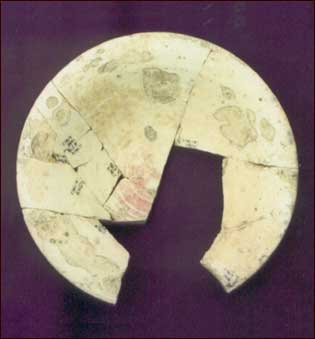Since its discovery in 2001, the BTHC archaeology crew has spent nineteen weeks digging at the Hefford Plantation in New Perlican. Over this time, 92 square metres in five different areas of the site have been excavated and over 20,000 artifacts have been recovered. Many of these date to the last quarter of the seventeenth-century and, while nothing has been found that dates to the time of Thomas Rowley, there can be little doubt that the site is part of the original Hefford Plantation established by at least 1675. Almost one third of the artifacts recovered from here are clay tobacco pipe fragments suggesting that it may have been some sort of work area and, while no evidence of any seventeenth-century structures have been found to date, the large amount of domestic material unearthed suggests that a dwelling house must once have stood somewhere nearby.
The pottery found so far includes fragments of at least 23 vessels made in Verwood just outside Poole in Dorset, 15 German made Westerwald drinking vessels, eight French manufactured Saintonge vessels, a number of tin-glazed vessels, several Iberian storage jars and a Spanish lusterware bowl. The presence of the Westerwald drinking vessels, tin-glazed earthenware and Spanish lusterware suggests a certain degree of affluence since these are generally considered to be luxury items and the Saintonge vessels indicate some contact between the English planters at New Perlican and the French. The high proportion of Verwood pottery is also significance since we know that this part of Trinity Bay traded with and was settled by people who came mainly from Dorset. It also seems clear that this site has been in use since the last quarter of the seventeenth-century. The pottery, bottle glass, clay tobacco pipes and other artifacts recovered include examples spanning the eighteenth, nineteenth and twentieth centuries.
Excavations will continue at New Perlican until at least 2007 and possibly beyond. During this time we will be conducting more survey work and excavations in an attempt to locate some of the structures mentioned in the late seventeenth-century documents. As we have seen, William Hefford had erected ten buildings on his property by 1677 and some evidence of these structures must have survived below ground.













